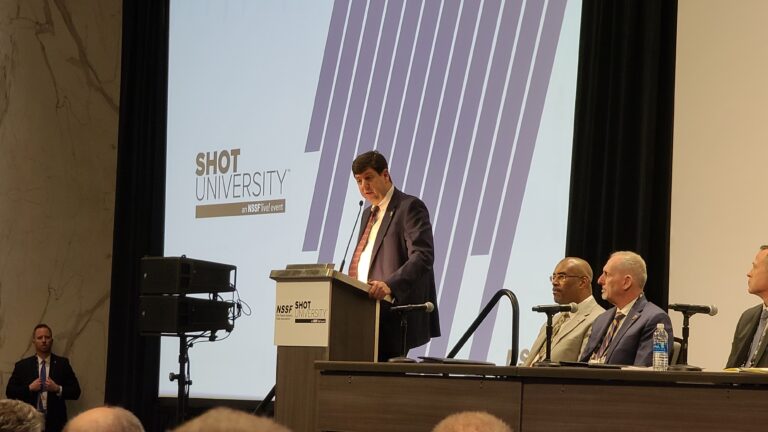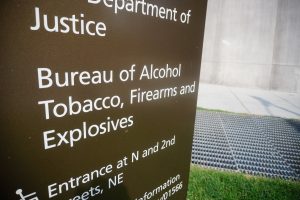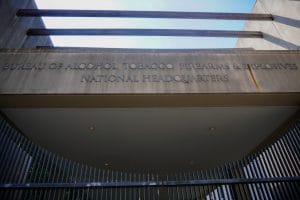The Bureau of Alcohol, Tobacco, Firearms, and Explosives (ATF) clarified its position on some of the millions of firearms affected by the upcoming pistol brace ban.
The agency said owners of imported guns equipped with pistol braces can register or dismantle them instead of destroying or turning them in. It said assembling a pistol-braced gun, most models of which the ATF now considers rifles, from more imported parts than allowed by section 922(r) of federal law is illegal. However, the law doesn’t affect the possession of those guns by people who did not assemble them, and they can be treated the same way as non-imported braced guns under the new rule.
“[A] person with an imported pistol that was subsequently equipped with a ‘stabilizing brace’ will have the same options as anyone else under the final rule,” the agency explains in a soon-to-be-released question-and-answer section on its website. “Should that person choose to register the firearm, no further modification of the firearm with domestic parts is required.”
Erik Longnecker, Deputy Chief of the ATF’s Public Affairs Division, also clarified the agency plans to officially publish the rule in the federal register next Tuesday after publicly releasing it earlier this month.
“The publication date for the final rule in the Federal Register is currently planned for 1/31/23,” Longnecker told The Reload.
The new information removes some confusion about how the rule, which affects millions of gun owners, will be enforced in practice. It also provides the timeframe for when the new ban will go into effect since the rule includes a 120-day grace period from the point it is officially published in the register rather than when it was publicly announced. Owners of braced guns covered by the rule will either have to dismantle them, register them, turn them in, or destroy them by May 2023, if the ATF meets its planned publication date.
Confusion over how the ban would affect imported guns stems from sections of the rule and an impact assessment document the ATF published alongside it. In those sections, the ATF assumes for cost-measuring purposes that those with imported braced guns would either turn them in or destroy them.
“ATF concurs that there may be a small number of individuals or FFLs that choose to turn in their whole firearm to ATF,” the agency said in its regulatory impact analysis. “These may include individuals who imported pistols and who may end up losing the value of their firearm if the firearm is a semiautomatic rifle. This is due to the restriction of 18 U.S.C. 922(r), which makes it unlawful for any person to assemble from imported parts any semiautomatic rifle which is identical to any rifle that is prohibited from importation because it is non-sporting.”
Some gun-rights advocates argued this meant those were the only options for people with affected guns.
“Written in the Stabilizing Brace Final Rule, ATF has concluded that any foreign-made pistols with stabilizing braces would be assembled in violation of 922(r), (as the firearms are retroactively being considered rifles),” the Firearms Regulatory Accountability Coalition said in a social media post. “As such, registration or removal of the brace would not bring the firearm into compliance. According to ATF, this leaves destruction or surrender to ATF as the only available options for foreign-made firearms with braces. This would include imported pistols where the brace was added at any stage, regardless if done by the user or the importer.”
The ATF’s new question-and-answer section confirms that removing a brace from an imported pistol affected by the rule would not undo the initial crime of “assembly.”
“I possess a pistol, which was imported and then subsequently equipped with a stabilizing brace. Does 18 U.S.C. § 922(r) apply to my firearm? No,” the agency wrote. “Section 922(r), in relevant part, makes it unlawful to assemble from imported parts a semiautomatic rifle that is otherwise not importable. The implementing regulations of the GCA at 27 CFR 478.39 provides that a person may not assemble a semiautomatic rifle using more than 10 of the imported parts listed in the relevant paragraphs of the regulation. As discussed on page 246 of the final rule, the criminal violation under section 922(r) is for the “assembly” of the semiautomatic rifle; therefore, no modification of such firearm would cure the 922(r) violation because the “assembly” has already occurred.”
But it says owners will have the same options for compliance as owners of domestic braced guns.
That aligns the agency’s position with what ATF Director Steve Dettelbach told licensed dealers assembled at Shot Show last week.
“You can remove the brace and sell it as a pistol,” Dettelbach said. “So, we tried to do things in this rule… look, I don’t want to look backward on the back and forth and all the things that happened. We tried to make this a forward-looking rule and to be fair to individuals out there who have these models. So, there’s a bunch of different options that a person who has one of the braces that is covered in configuration with a pistol, what they can do. One thing you can do is you can detach, and there’s… there’s no longer an NFA weapon. Now, you can’t reattach. Right. So, you have to do it so it can’t be reattached. But another thing you can do is you can detach, and you can attach it on to a weapon that has a length that won’t make you qualified as a short-barreled rifle. A third thing you can do is you can register. There’s a 120-day period after the rule is published that you can apply to register.”
He further emphasized that registering a braced gun with the ATF under the National Firearms Act (NFA) would not require the usual $200 tax stamp during the 120-day amnesty period. And he said those looking to register the guns, which the ATF itself estimated could be minimal given it only received 580 of an estimated 520,000 bumpstocks when it banned those devices, could use the full 120 days to submit their application.
“The first thing I would point out is that the rule has tax forbearance so that individuals who apply to register those within the statutory scheme do not owe the tax. That’s across the board,” he said. “The second thing is that while you are… while you are waiting, once you get an application in, you should save proof that you applied, screenshot or printout. And while you have the application in, while it’s sitting on our desk as we’re processing it, obviously there’s nothing unlawful about your continued possession of that weapon.”
The pistol brace rule is already being challenged in court by gun-rights groups. The rule is expected to draw several more lawsuits once officially published in the federal register.





